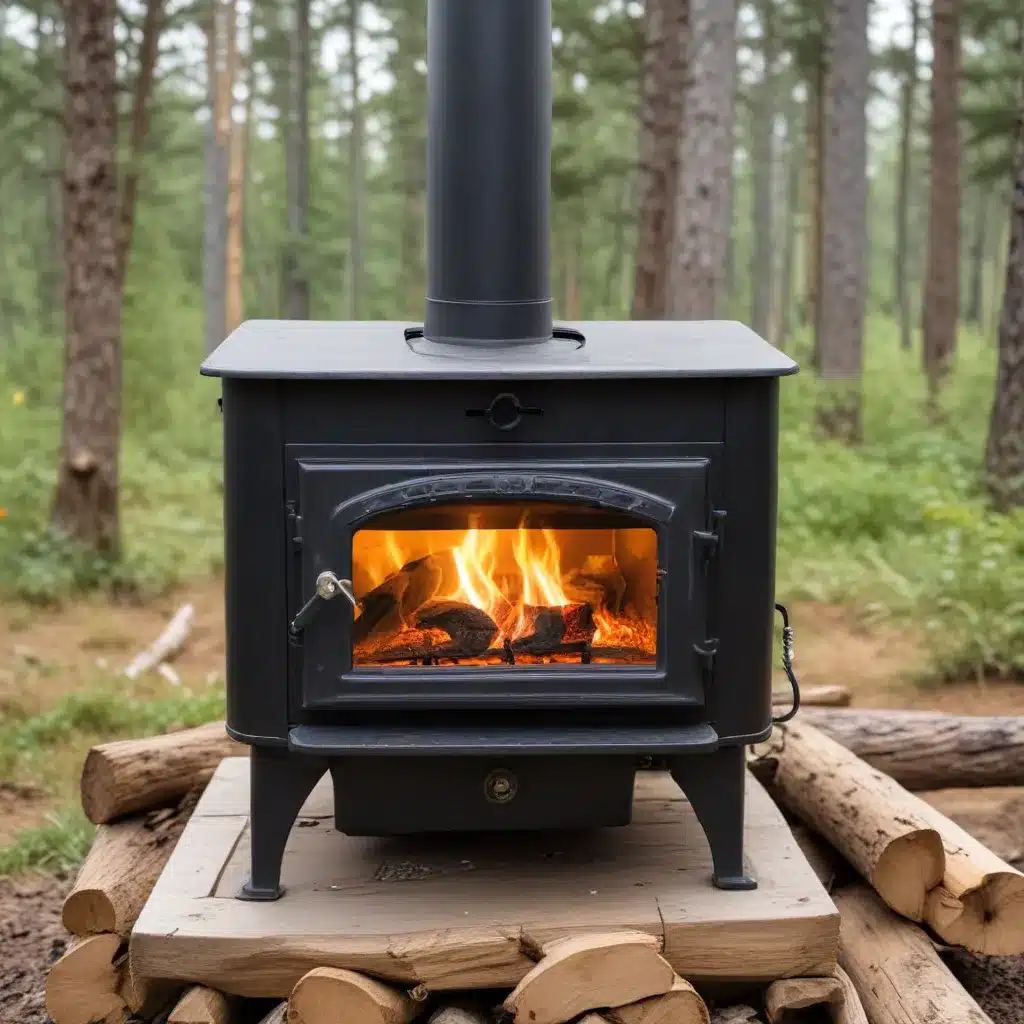
Navigating the Regulatory Landscape for Off-Grid Wood Heating
As an experienced expert in the world of wood stoves and sustainable heating solutions, I understand the unique challenges faced by those living in off-grid locations. Whether you’re building a remote cabin, powering an off-the-grid homestead, or exploring alternative energy options, the use of wood stoves presents both opportunities and compliance considerations that require careful navigation.
In this comprehensive guide, we’ll delve into the key regulatory factors to keep in mind when using wood stoves in off-grid settings, ensuring your heating system not only meets safety standards but also aligns with local and state-level requirements. From understanding emission standards to properly maintaining your wood stove, this article will provide you with the knowledge and insights needed to heat your off-grid home efficiently and responsibly.
Emission Standards and Regulatory Compliance
One of the primary considerations when using a wood stove in an off-grid location is ensuring your equipment meets the necessary emission standards. The California Air Resources Board (CARB) has established strict regulations regarding wood stove emissions, aimed at reducing air pollution and protecting the environment.
To comply with these standards, it’s crucial to select a wood stove that is certified by the Environmental Protection Agency (EPA) as meeting the current particulate matter emission limits. These certified models have been rigorously tested and designed to minimize harmful emissions, making them the preferred choice for off-grid installations.
When researching and comparing wood stove options, pay close attention to the model’s EPA certification and emission ratings. Reputable manufacturers, such as Osburn, often provide this information prominently on their product pages, making it easier to identify compliant models.
Fuel Source and Moisture Content Considerations
In addition to emission standards, the type of fuel used in your wood stove is also a critical factor in maintaining compliance and efficiency. Off-grid locations may present unique challenges when it comes to sourcing appropriate wood fuel, and it’s essential to understand the importance of using properly seasoned, dry wood.
Burning wet or unseasoned wood can lead to increased particulate matter emissions, reduced heat output, and the buildup of creosote in your chimney, which poses a significant fire hazard. To ensure your wood stove operates safely and efficiently, always use wood that has been properly seasoned for at least 6-12 months, with a moisture content of 20% or less.
Consider investing in a moisture meter to regularly test the fuel you plan to use, and prioritize sourcing wood from reliable local suppliers who can guarantee the appropriate moisture content. Proper wood storage, such as in a covered, well-ventilated area, can also help maintain the quality of your fuel.
Permitting and Local Regulations
When setting up a wood stove in an off-grid location, it’s crucial to be aware of the local and state-level regulations that may apply. Depending on your jurisdiction, you may need to obtain specific permits or comply with zoning requirements before installing your wood stove.
Some areas, such as certain regions in California, have implemented additional restrictions on wood-burning appliances, including bans on certain types of stoves or requirements for regular inspections. It’s essential to research the regulations in your specific location and ensure your wood stove installation aligns with all applicable laws and guidelines.
Consulting with local authorities, such as building and fire departments, can help you navigate the permitting process and understand any unique compliance considerations for your off-grid property. Being proactive and seeking guidance from these sources can help you avoid potential issues or fines down the line.
Proper Installation and Maintenance
Regardless of your off-grid location, the proper installation and maintenance of your wood stove are crucial for ensuring both safety and efficiency. Improper installation can lead to a range of problems, from poor airflow and inefficient heating to increased fire risks.
When setting up your wood stove, it’s essential to follow the manufacturer’s instructions carefully and consider factors such as clearance from combustible materials, proper venting and chimney installation, and the overall integration of the stove within your off-grid heating system.
Ongoing maintenance is also key to maintaining compliance and optimal performance. This includes regularly cleaning the stove, removing ash buildup, and inspecting the chimney for any creosote accumulation or structural issues. Familiarize yourself with the recommended maintenance schedule and procedures outlined by the manufacturer to ensure your wood stove continues to operate safely and efficiently.
Embracing Energy Efficiency and Sustainability
While navigating the regulatory landscape for wood stoves in off-grid locations can seem daunting, it’s important to remember that these heating solutions can also be a highly efficient and sustainable choice when used responsibly.
By selecting an EPA-certified wood stove, using properly seasoned fuel, and maintaining your system diligently, you can enjoy the benefits of reliable, off-grid heating while minimizing your environmental impact. Additionally, many off-grid homeowners are exploring the integration of renewable energy sources, such as solar or wind power, to further enhance the sustainability of their heating and power systems.
By staying informed, following best practices, and prioritizing energy efficiency, you can find a wood stove solution that aligns with your off-grid lifestyle and the regulatory requirements in your area. With the right approach, your wood stove can become a reliable, eco-friendly, and cost-effective heating source for your off-the-grid home.
Conclusion
Navigating the compliance considerations for wood stove use in off-grid locations requires a thoughtful and diligent approach. By understanding emission standards, fuel requirements, local regulations, and proper installation and maintenance procedures, you can ensure your wood stove not only meets safety and environmental standards but also provides reliable, efficient, and sustainable heating for your off-the-grid home.
As an experienced expert in the field of wood stoves and heating solutions, I encourage you to continue exploring the resources available on WoodStoveHeaters.com to deepen your understanding and find the optimal heating solution for your off-grid lifestyle. With the right knowledge and approach, you can enjoy the benefits of wood-based heating while fulfilling your commitment to responsible and compliant energy use.


